
Stockbyte/Stockbyte/Getty Images
Textile mills develop different fabric treatments and finishes each collection season to excite designers as well as fabric purchasers. Cotton goods labeled as ring spun or combed, describe the textile treatment process and finish. Although the added processing generally raises the fabric cost, it also produces higher quality cotton with a softer texture, referred to as soft-hand. Garments manufactured with these cotton goods, like knitted T-shirts or fine woven blouses, retail at higher price points.
Staple Yarns
Natural fibers, such as cotton, require sufficient length, strength and pliability. The length of the fibers (referred to as the staple) varies, generally ¾ to 1 ½ inches for cotton. Mills producing cotton fabric separate fibers, using a process referred to as carding, prior to making the yarn. In cotton, carding removes dirt, debris and short fibers. This separating process passes fibers through a filmy sheet, funneling them into a soft mass called a sliver. These sheets then pass between rollers covered in fine-wire card cloth, brushing the sheets. This necessary process prepares the cotton prior to spinning or combing.
Producing Ring-Spun Cotton
Twisting fibers produces yarn. Spinning is the added process used to produce ring spun cotton. Since each textile mill's machinery varies, the spinning methods differentiate. The term "ring spun" ensures that the mill spun the yarn using ring frames. This process continuously twists and thins the cotton-fiber strands, producing a fine, rope-like thread or yarn. The more twists to the inch, the stronger and softer the yarn. Whether knitted or woven into material, the ring spun yarn retains its strength and softness.
Shopping for Ring-Spun Garments
T-shirts, skirts, rompers and dresses are just a few styles of clothing made out of ring spun cotton. Since this cotton type is made from fine yarns, the soft and smooth texture of the fabric is one of the main selling features. Designers include the term "ring spun" as part of the label to ensure customers of the garment's comfort, durability and softness.
Producing Combed Cotton
Lustrous and smooth cotton fabric most likely has undergone combing. The combing process makes the fibers parallel in the sliver by removing the short fibers, also referred to as staple fibers, from the long-staple cotton. The sliver is drawn out narrower and narrower, depending on the fineness of the yarn to be produced. Combing requires long fibers to produce the fine, uniform yarns necessary to give the combed cotton material its high sheen finish.
Shopping for Combed Cotton Garments
A quick way to differentiate untreated cotton from combed is to look at the fabric's sheen. If the garment does not have a pronounced sheen and appears flat or dull, most likely the item was manufactured with uncombed cotton fabric. Most designers label the styles as combed, alerting the consumer that they are purchasing higher quality goods, justifying the higher retail price. For instance, French voile or batiste blouses often use fine-quality combed cotton.
Related Articles

Types of Cotton Fabric
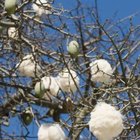
List of Plants Used for Clothing

How Is Wool Turned Into Fabric?

What Is Cotton Plisse?

What Is Berber Fleece?
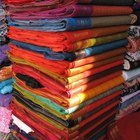
Information About Cotton Fabric
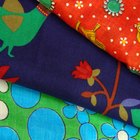
What Is Arnel Vintage Material Fabric?

The Definition of Agave Fiber
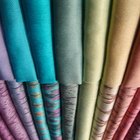
Fabrics That Haute Couture Designers Use

How Clothes Are Made From Cotton

Basic Concepts of Fashion Design

How to Shrink Flannels

What Is Pinpoint Cotton?

How Much of the World's Clothing Is ...
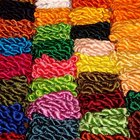
How Is Silk Made Into Fabric?
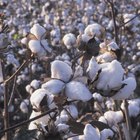
How Is Cotton Made?

What Is the Difference Between Denim & ...

How to Get the Stiffness Out of ...

What Is the Difference Between Acrylic ...

How to Determine Measurements for ...
References
Writer Bio
Mercedes Valladares is the founder of M721Organics and has been an independent designer for over 15 years. Her work experience commenced during college with manufacturers based in New York and Hong Kong. Her education includes LIM College, International Fine Arts College and design certification from the Paris Fashion Institute. She produces eco-crafting videos and writes recycling articles online.
Photo Credits
Stockbyte/Stockbyte/Getty Images